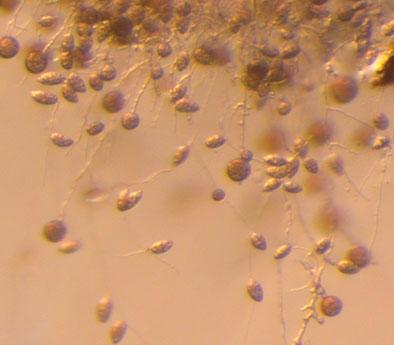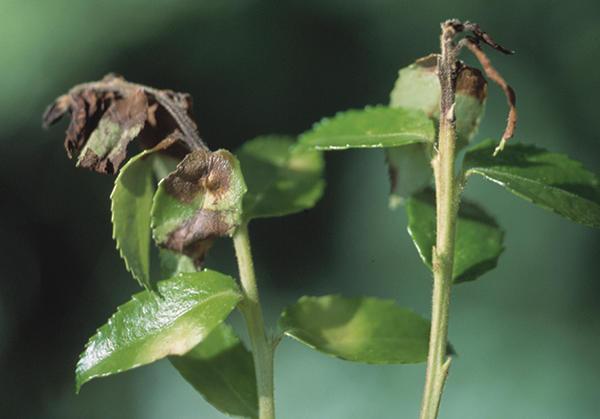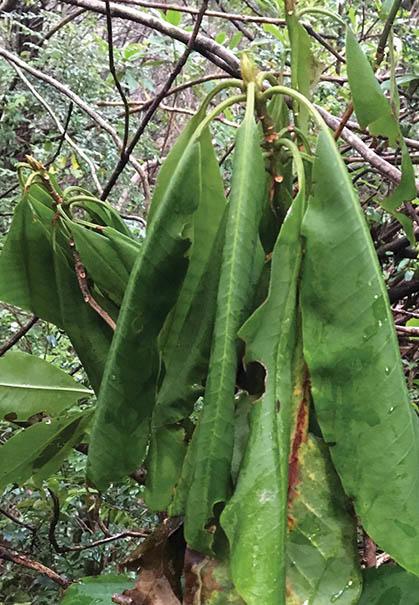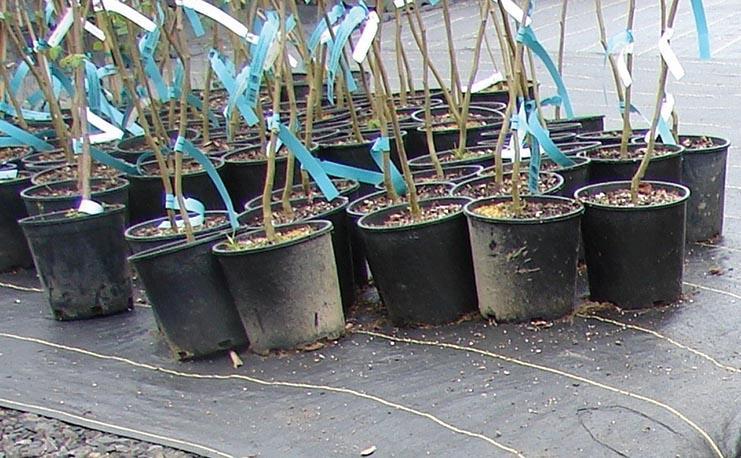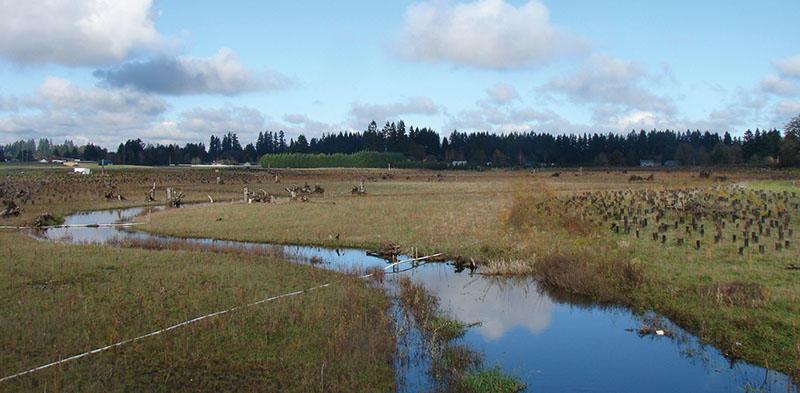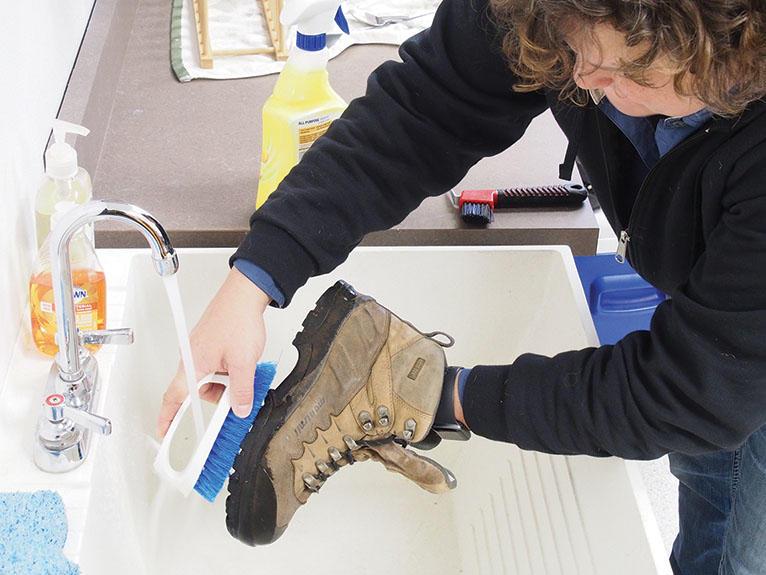Section anchor "what-are-phytophthoras"
What are Phytophthoras?
Phytophthoras are microscopic organisms that cause root, stem and leaf diseases in crops, ornamentals and native plants (including forbs, shrubs and trees).
- Many Phytophthoras are non-native, invasive species.
- Phytophthora means “plant destroyer” in Greek. Phytophthora species have caused serious destruction to agricultural crops and forests worldwide. The Irish potato famine of the 1840s was caused by a Phytophthora species.
- Phytophthoras have swimming spores that allow them to spread in wet conditions.
Best practices for restoration planting
Choose only healthy, vigorous planting stock from nurseries that employ best management practices for reducing disease. Consider visiting the nursery. Avoid plants that show symptoms of leaf blight, shoot dieback or discolored or decayed roots.
- In sensitive restoration sites, consider direct seeding to avoid introducing disease-causing organisms with infested roots and soil.
- Check with your Extension forester or restoration practitioner for known diseases, quarantine requirements and the availability of disease-resistant plants in your area.
- Clean and sanitize vehicles used for transporting nursery plants prior to loading.
- Clean tires and the underside of vehicles before accessing restoration sites. For best results, use a car wash or a pressure washer.
- Keep plants elevated and off the bare ground in intermediate holding areas.
Section anchor "best-practices-for-restoration-sites"
Section anchor "why-the-focus-on-prevention"
Why the focus on prevention?
- Invasive. Non-native Phytophthora species can spread widely when introduced to a new ecosystem with no natural controls or resistance. Sudden oak death, caused by Phytophthora ramorum, has killed hundreds of thousands of tanoak trees in southern Oregon. A related pathogen, Phytophthora lateralis, causes Port-Orford-cedar root disease.
- Deadly to vegetation. Phytophthora can kill or weaken susceptible plants, known as hosts. Some Phytophthoras infect a wide range of host plants; others infect just a few.
- Easily spread. Phytophthora spores can move and survive for long periods of time in soil and water. People introduce Phytophthoras to new areas by planting diseased plants or by spreading infested soil on equipment and shoes.
- Difficult to eradicate. Once Phytophthoras become established, they are difficult, if not impossible, to control.
- A threat to ecosystems. Native vegetation serves as habitat and food sources for a diverse array of organisms. Widespread decline and mortality of susceptible plants can affect many other organisms.
- Costly. Phytophthoras can cause restoration planting projects to fail. Once a disease is established, control is costly.
Section anchor "keep-it-clean"
Keep it clean
- Set up a sanitation station for tools and footwear. Use clean tools and sanitize them before entering restoration sites and again before leaving.
- Clean and sanitize footwear before leaving home or your workplace, and again before leaving the restoration site. Keep a bucket in your vehicle with disinfectant and a brush. Remove soil and debris with the brush, then spray with quaternary ammonium products such as Lysol® or Formula 409®.
- Observe safety precautions.
- Don’t dig up and share plants from other landowners or from public lands. This practice, while economical, can spread disease.
- Consider spreading western redcedar heartwood chips on trails to and from the restoration site. Western redcedar heartwood acts as a barrier between the soil and footwear and is toxic to the organism that causes sudden oak death. For sources, see the Oregon Forest Industry Directory.
Section anchor "planting-checklist"
Planting checklist
- Obtain seed from areas free of disease.
- Purchase plants from nurseries with good sanitation practices.
- Dispose of plants showing symptoms.
- Transport nursery plants in vehicles free of soil and debris.
- Wash mud from undersides of vehicles.
- Verify intermediate plant storage areas have good drainage and are free of soil and debris. Don’t store plants in direct contact with soil.
- Set up a sanitation washing station for shoes and tools.
- Monitor the planting area and test if plants show signs of disease.

